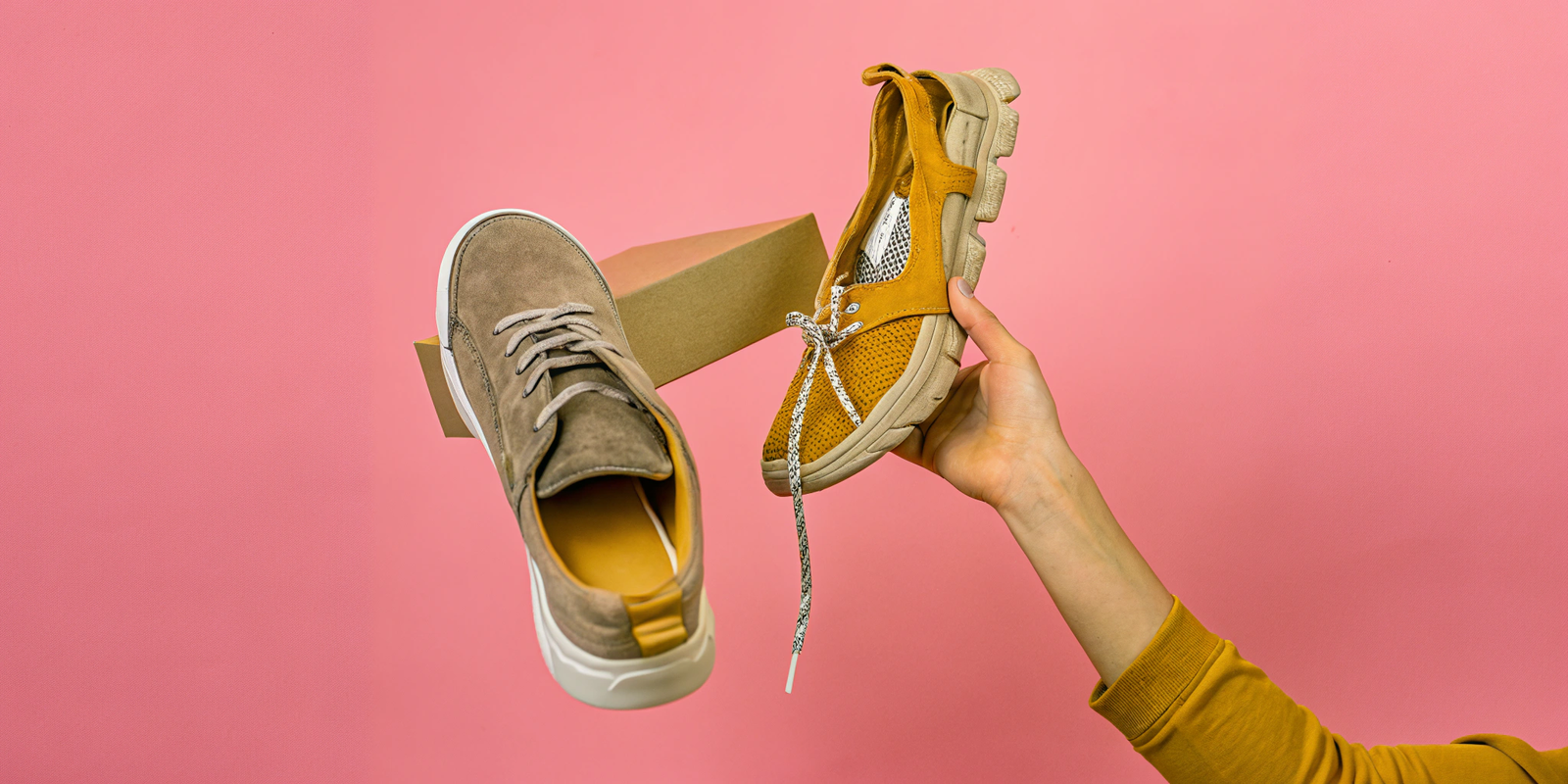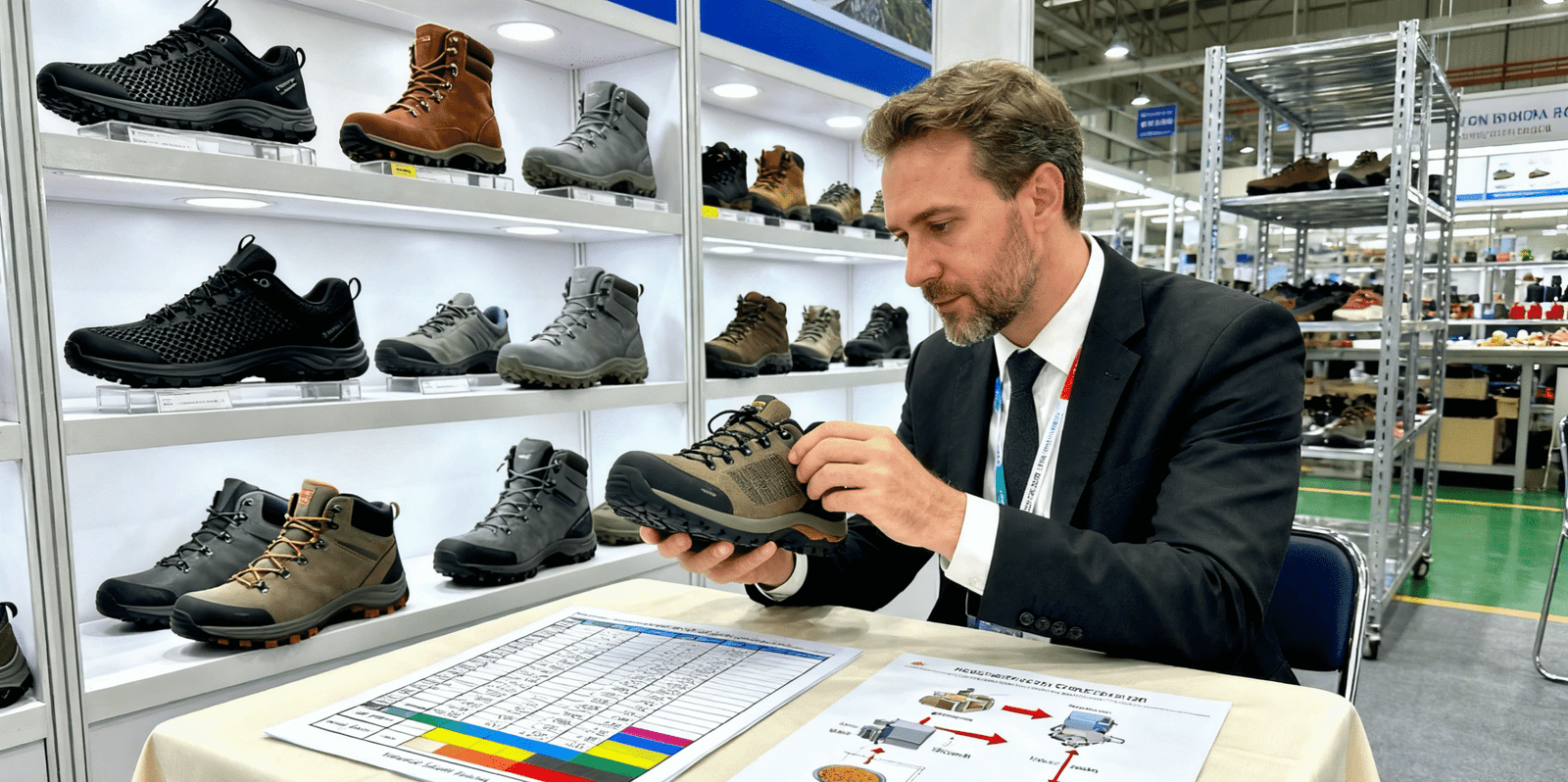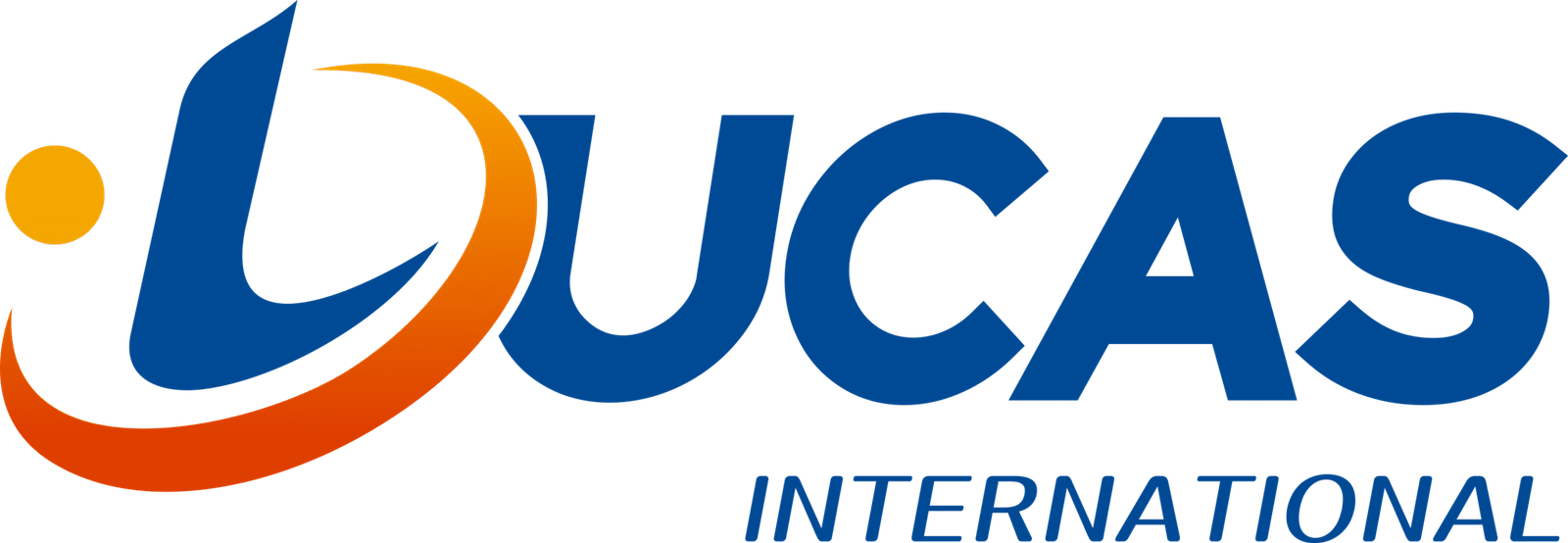Problem: For decades, China has reigned supreme as the undisputed "world's factory" for footwear, but rising costs and geopolitical shifts are prompting many brands to eye alternative manufacturing hubs. Agitation: You might wonder if Vietnam, with its competitive labor and growing infrastructure, is truly poised to unseat China, or if such a monumental shift is more complex than it appears, leaving you unsure about future sourcing strategies. Solution: While Vietnam is rapidly expanding its footwear production capabilities and attracting significant investment, it’s more likely to become a formidable complement to China rather than a complete replacement, creating a diversified global shoe manufacturing landscape.
Vietnam has emerged as a major player in global footwear manufacturing, attracting significant investment from international brands due to its competitive labor costs, preferential trade agreements, and growing industrial infrastructure. While it has become a leading producer, especially for athletic and vulcanized shoes, it still faces limitations in raw material sourcing and overall supply chain breadth compared to China. Therefore, while Vietnam's rise is undeniable, it's realistically positioned to be a crucial alternative and diversification hub, rather than fully eclipsing China's comprehensive dominance in the near future.

In my 25 years in the shoe manufacturing business at Lucas, I've seen China's incredible growth and now Vietnam's rapid ascent. It's not a simple 'either/or' scenario; it's about strategic diversification in a complex global supply chain.
How Reliable Are Vietnamese Shoe Suppliers? Problem: As brands consider shifting production, the reliability of new manufacturing partners in Vietnam becomes a critical concern, going beyond just cost to encompass quality, consistency, and ethical compliance. Agitation: You might worry about finding trustworthy suppliers in a new country, navigating potential quality control issues, or ensuring factories meet your brand’s standards for social and environmental responsibility, making the move seem daunting. Solution: Vietnamese shoe suppliers, particularly the larger, export-oriented factories, are generally highly reliable, known for their strong commitment to quality, adherence to compliance standards, and experience with major international brands, though due diligence remains essential for all new partnerships.
Vietnamese shoe suppliers, especially those working with established international brands, are considered highly reliable. They have built a strong reputation for consistent quality, efficient production, and adherence to social compliance standards (like BSCI, SEDEX). Many factories are equipped with modern machinery and skilled workforces, capable of producing large volumes of complex footwear. However, as with any sourcing location, reliability can vary between individual factories; therefore, thorough vetting, factory audits, and clear communication are crucial to ensure a successful and reliable partnership.
Factors Contributing to Reliability
- Experience with Major Brands:
- Many large footwear brands (Nike, Adidas, Puma, etc.) have been producing in Vietnam for decades. This has pushed factories to meet high international standards for quality, efficiency, and compliance.
- This experience translates to a sophisticated understanding of global supply chain demands.
- Investment in Infrastructure and Technology:
- The Vietnamese government and foreign investors have poured money into improving factory infrastructure. This includes modern machinery, production lines, and quality control systems.
- This ensures consistent output and adherence to specifications.
- Skilled Labor Force:
- Vietnam has a large and relatively young workforce. They are often perceived as highly motivated and trainable.
- Many workers have extensive experience in footwear manufacturing, contributing to skill and precision.
- Commitment to Compliance:
- Due to pressure from international brands and governmental regulations, many Vietnamese factories are highly aware of and compliant with social and environmental standards (e.g., BSCI, SEDEX, SA8000, ISO).
- This reduces ethical risks for buyers.
- Competitive Landscape:
- The strong competition among Vietnamese factories motivates them to continuously improve reliability, quality, and service to retain international clients.
- Government Support:
- The Vietnamese government actively supports the export sector. This includes implementing policies that facilitate trade and attract foreign investment in manufacturing. New trade agreements also help.
While the general reliability is high, it's important to differentiate between large, established export factories and smaller, newer operations. Thorough due diligence is always recommended, including factory audits, quality control checks at various production stages, and clear contractual agreements.
Reliability Benchmarks for Vietnamese Shoe Suppliers
| Factor | Assessment in Vietnam | Implications for Buyers |
|---|---|---|
| Quality Consistency | High for export-oriented factories; strong QC systems in place. | Buyers can expect consistent product quality meeting international standards. |
| Production Efficiency | High due to modern machinery, experienced workforce, and streamlined processes. | Timely delivery and optimized lead times for complex and high-volume orders. |
| Social Compliance (CSR) | Strong for larger facilities due to major brand pressure and audit requirements (BSCI, SEDEX). | Lower ethical risks; easier to meet corporate social responsibility goals. |
| Communication | Generally good, especially with English-speaking management in export factories. | Facilitates smoother collaboration, reduces misunderstandings, and enables quick problem-solving. |
| Technical Capabilities | High for athletic and complex vulcanized shoes; good for advanced materials. | Capable of handling intricate designs and innovative manufacturing processes. |
| Flexibility/Adaptability | Good, but smaller factories may offer more flexibility for custom/smaller orders. | Major factories are less likely to accommodate small MOQ or frequent design changes. |
| Lead Times | Competitive, but can be impacted by raw material imports. | Plan for lead times influenced by supply chain structure, especially for non-local materials. |
What Types of Shoes Are Mostly Produced in Vietnam? Problem: If you're considering Vietnam for shoe production, it's crucial to understand its manufacturing strengths, as not all shoe types are equally well-suited for production there. Agitation: You might mistakenly believe Vietnam produces the full spectrum of footwear, leading to misguided sourcing decisions if your product doesn't align with their core competencies, potentially causing delays or quality issues. Solution: Vietnam primarily excels in the production of athletic footwear, including running shoes and sneakers, along with vulcanized casual shoes, leveraged by its strong workforce, specialized infrastructure, and established supply chains for these categories.
Vietnam is a global powerhouse for athletic footwear, producing a vast majority of the world's running shoes, sneakers, and sports-specific models for brands like Nike, Adidas, and Puma. It also has a strong capability in vulcanized casual shoes (e.g., canvas sneakers). While less dominant, Vietnam also produces some high-volume casual and outdoor footwear. Its specialization is largely driven by long-standing relationships with major sports brands, a skilled labor force, and investments in the necessary production technologies for these shoe types.

At Lucas, when clients approach us about athletic shoes, Vietnam is always on the short list. Their expertise in performance footwear—it's truly impressive.
Vietnam's Footwear Specializations
- Athletic and Performance Footwear:
- This is Vietnam's biggest strength. They are a primary manufacturing hub for almost all major global sports brands.
- This includes running shoes, basketball shoes, training shoes, and various types of sneakers.
- Factories here have invested heavily in the technology and skilled labor required for complex athletic shoe constructions, advanced materials, and performance features.
- They are adept at handling intricate designs and sophisticated bonding techniques.
- Vulcanized Casual Shoes:
- Vietnam also has a well-established capability in producing vulcanized footwear. This includes classic canvas sneakers like Vans or Converse styles.
- The vulcanization process requires specific machinery and expertise, which many factories in Vietnam possess.
- High-Volume Casual Footwear:
- Beyond athletic and vulcanized, Vietnam also produces a significant volume of general casual footwear. This often overlaps with lifestyle-oriented sneakers and basic comfort shoes.
- Some Outdoor and Hiking Footwear:
- There is a growing segment of factories specializing in durable outdoor and hiking boots/shoes. This builds on their expertise in athletic shoe construction and material bonding.
While Vietnam's capabilities are expanding, it's not typically known for high-end luxury dress shoes (which are more often made in Europe or certain parts of China), nor for traditional leather craft like some regions in Italy or India. Its strength lies in efficiently producing large volumes of technically demanding athletic and casual footwear.
Shoe Types Produced in Vietnam: Core Strengths
| Shoe Type / Category | Vietnam Production Capability | Key Characteristics of Production | Examples of Brands / Styles |
|---|---|---|---|
| Athletic Footwear | Dominant: Running, Training, Basketball, Lifestyle Sneakers. | High volume, complex constructions, advanced material handling, specialized machinery. | Nike, Adidas, Puma, New Balance, Under Armour. |
| Vulcanized Footwear | Strong: Canvas sneakers, classic casuals. | Requires specific vulcanization presses and expertise, often simpler upper constructions. | Vans, Converse (substantial production). |
| High-Volume Casual | Good capability, often overlaps with lifestyle sneakers. | Efficient production of everyday wear, comfort-focused designs. | Various fashion brands, private label casuals, some fashion sneakers. |
| Outdoor/Hiking Footwear | Growing, leveraging technical expertise from athletic. | Focus on durability, specific sole constructions, material bonding for performance. | Salomon, Merrell (some production). |
| Specialized Footwear | Limited for truly high-end luxury or deeply traditional craft. | Not typically their core strength; focus on mass-produced, industrial scale. | (Not primary for Vietnam) Fine leather dress shoes, bespoke artisan footwear. |
What Challenges Do Brands Face When Shifting Production to Vietnam? Problem: Moving shoe production from a long-established hub like China to Vietnam sounds strategic, but it rarely happens without encountering a unique set of operational and logistical hurdles. Agitation: You might worry about the complexities of setting up new supply chains, managing material sourcing, navigating local regulations, and potentially facing unexpected costs or delays inherent in a significant production shift. Solution: Brands shifting production to Vietnam face challenges including rising labor costs, reliance on raw material imports from China, infrastructure limitations, and managing new supply chain relationships, all of which require meticulous planning and patient execution.
Brands shifting shoe production to Vietnam face several challenges: rising labor costs (though still competitive, they are increasing rapidly), a greater reliance on imported raw materials (especially from China, meaning supply chain vulnerabilities), potential infrastructure limitations (logistics and energy compared to China's scale), and the need to build new, vetted supplier relationships. Additionally, while trade agreements are beneficial, navigating new regulatory environments and potentially longer lead times for certain components can also pose hurdles for efficient production transfers.

At Lucas, when we help clients with production transfers, we always emphasize the "crawl, walk, run" approach. It's rarely a flip-the-switch operation, and anticipating challenges is half the battle won.
Challenges in Shifting Production to Vietnam
- Rising Labor Costs:
- While still lower than China, wages in Vietnam are increasing at a significant rate. This can erode some of the initial cost advantage.
- Brands need to factor in these escalating costs in their long-term strategies.
- Reliance on Raw Material Imports (Especially from China):
- Vietnam's domestic supply chain for raw materials (fabrics, synthetic leathers, specialized components, molds) is less developed and comprehensive than China's.
- Many Vietnamese factories still source a significant portion of their materials from China. This means that brands are still indirectly exposed to Chinese supply chain disruptions, tariffs, and lead times.
- Infrastructure Limitations:
- While improving rapidly, Vietnam's infrastructure (roads, ports, electricity grids) can still experience bottlenecks compared to China's highly developed network.
- This can lead to logistical challenges, increasing transportation costs and lead times.
- Building New Supplier Relationships and Vetting:
- Brands need to invest significant time and resources in identifying, vetting, and building relationships with new factories in Vietnam. This includes quality control audits, social compliance checks, and establishing clear communication channels.
- This transition period requires patience and dedicated management.
- Less Diversified Production Capabilities (Compared to China):
- While strong in athletic and vulcanized, Vietnam's overall capacity and specialized capabilities across all shoe types (e.g., highly complex fashion shoes, niche footwear) are not yet as broad as China's.
- This might limit diversification within Vietnam.
- Lead Times for New Production:
- Setting up new production lines or moving existing ones can involve longer lead times in the initial phase. This is due to factory integration, material sourcing, and new relationship building.
- Governmental Bureaucracy & Regulations:
- While business-friendly, navigating Vietnam's specific regulations, customs procedures, and investment laws can still be complex and require local expertise.
Despite these challenges, the strategic advantages of diversifying production and capitalizing on Vietnam's strengths often outweigh the hurdles for many brands, making it a key component of a balanced global sourcing strategy.
Challenges Faced When Shifting Production to Vietnam
| Challenge Area | Description | Impact on Brands | Mitigation Strategies for Brands |
|---|---|---|---|
| Rising Labor Costs | Wages are increasing faster than in China in percentage terms. | Erodes cost savings; continuous re-evaluation of pricing strategy. | Focus on automation, higher value-added products, diversify within Vietnam. |
| Material Sourcing Reliance | High dependency on imported raw materials, especially from China. | Supply chain vulnerability, potential for indirect tariff exposure, longer lead times. | Encourage local material development, build strong relationships with Chinese suppliers for direct shipment. |
| Infrastructure Limitations | Port congestion, road networks less developed than China's. | Logistical delays, increased transportation costs, potential production bottlenecks. | Partner with experienced logistics providers, utilize multiple ports, plan buffer inventory. |
| Supplier Vetting & Onboarding | Time and resource intensive to identify, audit, and establish trust with new factories. | Initial delays in production, potential quality/compliance risks if not thorough. | Engage third-party sourcing agents, conduct comprehensive factory audits (quality, social, environmental). |
| Regulatory & Bureaucratic Hurdles | Navigating local laws, permits, and customs procedures can be complex. | Delays, potential for fines, increased administrative burden. | Hire local consultants, work with experienced import/export teams, seek expert legal advice. |
| Less Comprehensive Ecosystem | Smaller network of component suppliers, less diverse manufacturing capabilities than China. | Limited flexibility for niche/complex products, longer lead times for custom parts. | Maintain China as a sourcing option for specialized components, focus on Vietnam's core strengths. |
| Cultural & Communication Gaps | Different business practices, communication styles can lead to misunderstandings. | Delays, errors, strained relationships. | Assign dedicated liaison teams, invest in cultural training, use clear, written communication. |
While Vietnam is certainly a strong contender in the global footwear manufacturing landscape, it is unlikely to completely "overtake" China in the near future due to China's comprehensive supply chain and massive scale. Vietnamese suppliers are highly reliable, particularly for athletic and vulcanized shoes, leveraging their skilled workforce and modern factories. However, brands shifting production face challenges like rising labor costs, reliance on Chinese raw materials, and infrastructure limitations. The most probable outcome is a more diversified global sourcing strategy where both countries play crucial, complementary roles.
